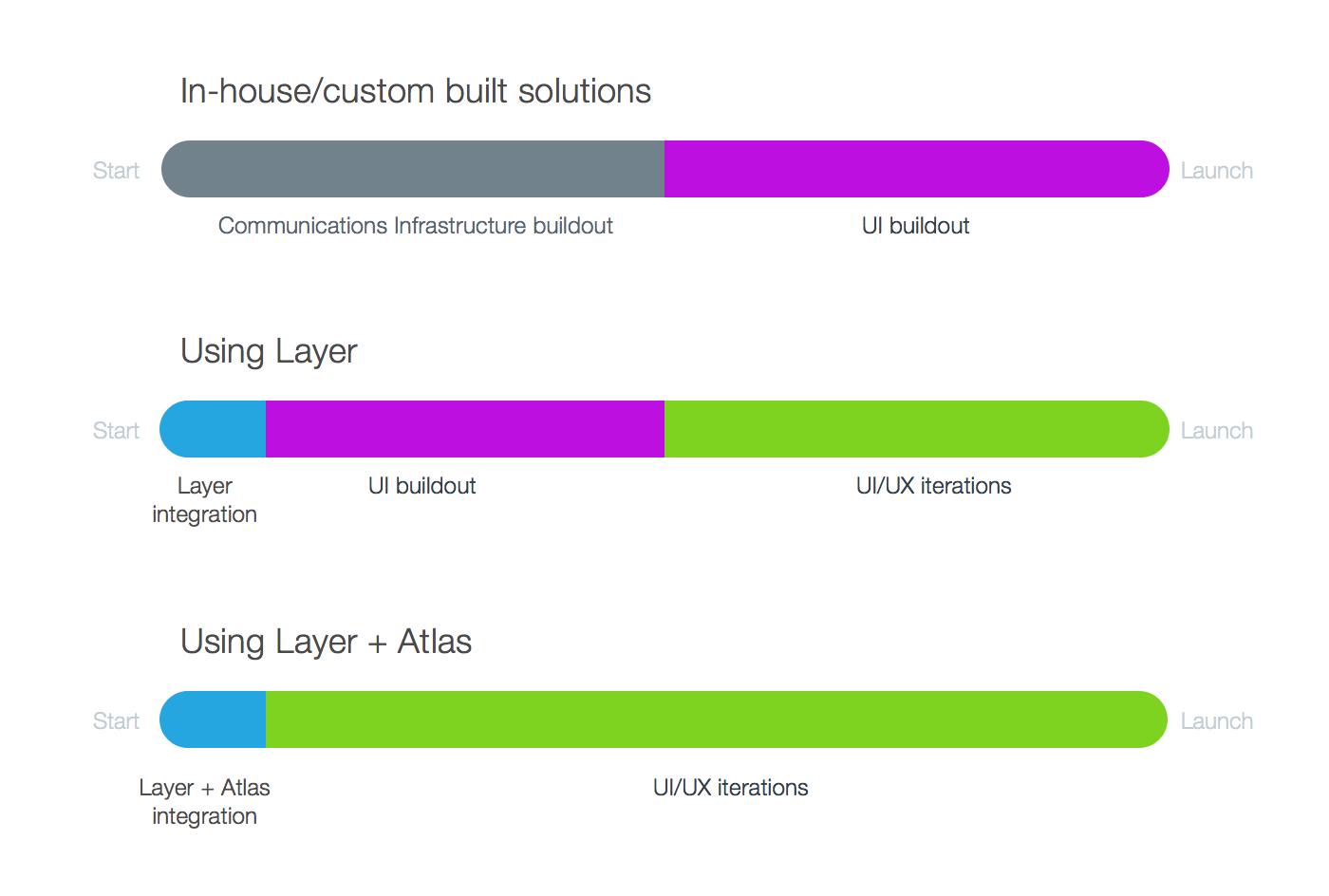Startup Layer: an old tale in a new way
Layer company does not abandon attempts to "make friends" among themselves online services for instant messaging. The first public release of Atlas, the library for creating messenger user interfaces, has recently been released. But doesn't this remind you of the XMPP story ? Maybe now the same people are at the helm?
In the early 2000s, Jeremy Miller created the open-source instant messaging protocol XMPP. Miller’s idea was for any developer to open their instant messaging server, register users in it, and exchange messages with other XMPP servers.
The idea was supported by the developers of AOL, QIP, Whatsapp, Yahoo! Messenger, Google Talk and many others. And by the mid-2000s, users could exchange messages using any messenger that supports XMPP. Thus began a new period in the history of messengers. True, it did not last long.
One of the major drawbacks of XMPP was the ability to authorize on only one device. In addition, the protocol suffered data transfer redundancy. In an attempt to solve these problems, or perhaps, pursuing their own selfish goals, since 2009, many developers began to refuse support for XMPP. First, the creators of Whatsapp did it, then Skype, iMessage and many others. More recently, Google closed the Google Talk project, which still supported XMPP. Most of the most popular instant messengers were isolated from each other.
Miller was disappointed. “I cannot call it a communication system if its elements are isolated,” he said.
Today, instant messaging applications are more in demand than ever. It’s enough to recall that Facebook recently bought Whatsapp for $ 16 billion. New instant messengers are being created: Snapchat, Wire, Telegram. However, such diversity, oddly enough, poses certain communication barriers. For example, if everyone in the family uses different messengers, then they will not be able to contact each other. After all, now their protocols are closed.
A year and a half ago, a startup called Layer appeared. This is a new protocol that allows the implementation of messaging between any applications. Such a "fairy tale in a new way" in the realities of the modern world is perceived with even greater distrust than in the 2000s. However, only one beta version collected 1,500 orders, leaving 8,500 on the waiting list.
Currently, Layer is actively used by mobile application developers. Moreover, the public release of Atlas , an open source library for creating the messenger user interface , was released on February 24, 2015 .

The main research associate at Layer was, of course, Jeremy Miller.
The most important advantage of Layer is its extreme simplicity: to implement the exchange of messages in your application, you need to add only 10 lines of code.
Atlas is also very easy to use. All this allows you to create a fully functional messenger in just a few days or weeks.
Developers are provided with off-the-shelf user interface components that integrate seamlessly with the Layer SDK.

And for startups that are still under development, Layer offers its libraries for free. This company policy is designed to ensure that they will be full customers when they get on their feet.
It is no secret that such large companies as Google, Yahoo, Microsoft, have recently been buying up the most successful mobile services with amazing speed. As a result, these large companies become centers of some isolated clusters. This circumstance is advantageous to Layer - part of the work of unification is done for them. Now the company remains to establish communication between these clusters.
In the early 2000s, Jeremy Miller created the open-source instant messaging protocol XMPP. Miller’s idea was for any developer to open their instant messaging server, register users in it, and exchange messages with other XMPP servers.
The idea was supported by the developers of AOL, QIP, Whatsapp, Yahoo! Messenger, Google Talk and many others. And by the mid-2000s, users could exchange messages using any messenger that supports XMPP. Thus began a new period in the history of messengers. True, it did not last long.
One of the major drawbacks of XMPP was the ability to authorize on only one device. In addition, the protocol suffered data transfer redundancy. In an attempt to solve these problems, or perhaps, pursuing their own selfish goals, since 2009, many developers began to refuse support for XMPP. First, the creators of Whatsapp did it, then Skype, iMessage and many others. More recently, Google closed the Google Talk project, which still supported XMPP. Most of the most popular instant messengers were isolated from each other.
Miller was disappointed. “I cannot call it a communication system if its elements are isolated,” he said.
Today, instant messaging applications are more in demand than ever. It’s enough to recall that Facebook recently bought Whatsapp for $ 16 billion. New instant messengers are being created: Snapchat, Wire, Telegram. However, such diversity, oddly enough, poses certain communication barriers. For example, if everyone in the family uses different messengers, then they will not be able to contact each other. After all, now their protocols are closed.
Miller is back in the game
A year and a half ago, a startup called Layer appeared. This is a new protocol that allows the implementation of messaging between any applications. Such a "fairy tale in a new way" in the realities of the modern world is perceived with even greater distrust than in the 2000s. However, only one beta version collected 1,500 orders, leaving 8,500 on the waiting list.
Currently, Layer is actively used by mobile application developers. Moreover, the public release of Atlas , an open source library for creating the messenger user interface , was released on February 24, 2015 .

The main research associate at Layer was, of course, Jeremy Miller.
Benefits and Free Buns
The most important advantage of Layer is its extreme simplicity: to implement the exchange of messages in your application, you need to add only 10 lines of code.
Atlas is also very easy to use. All this allows you to create a fully functional messenger in just a few days or weeks.
Developers are provided with off-the-shelf user interface components that integrate seamlessly with the Layer SDK.

And for startups that are still under development, Layer offers its libraries for free. This company policy is designed to ensure that they will be full customers when they get on their feet.
Prospects
It is no secret that such large companies as Google, Yahoo, Microsoft, have recently been buying up the most successful mobile services with amazing speed. As a result, these large companies become centers of some isolated clusters. This circumstance is advantageous to Layer - part of the work of unification is done for them. Now the company remains to establish communication between these clusters.
